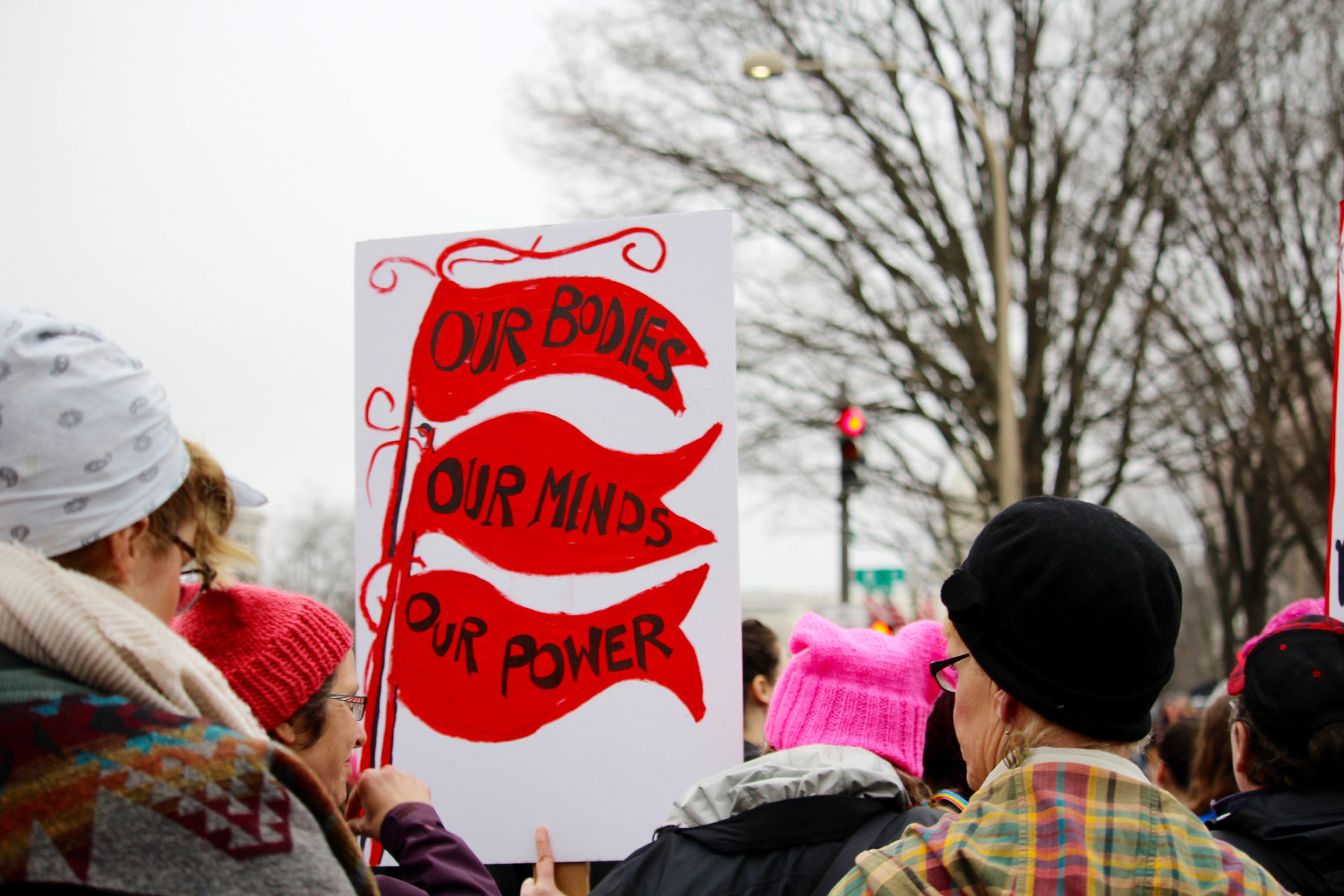In July 2022, amid the immediate aftermath of Roe v. Wade’s repeal, the NationSwell Mainstage convened thought leaders, experts, and social impact practitioners to discuss an unexpected front in the movement to protect and advance abortion rights: the media.
At the event, filmmaker and NationSwell Council member Jess Jacobs moderated an expert panel featuring journalist Samhita Mukhopadhyay, Dr. Eva Lathrop, Global Health Director at PSI, sociologist Gretchen Sisson. Together, they explored media’s responsibility to women and pregnant people amid this rollback of rights, its undeniable power to normalize subjects that carry social stigma, and why it’s such a key component in the effort to affirm the rights of people with uteruses to health and bodily autonomy.
Below are some of the key takeaways from the conversation.
Television and movies give writers a chance to connect audiences with abortion stories that resonate with them on a personal level. According to Sisson, screenwriters have an opportunity to craft abortion narratives that provide viewers with a window into something that they might have experience with — exposing them to new perspectives and shifting their beliefs in the process. By using characters that audiences already have an emotional connection to, writers can tell abortion stories in ways that feel familiar, relatable, and sympathetic.
Reaching out on your side of the political aisle matters — reaching across the aisle, not so much. When it comes to trying to change hearts and minds, appealing to pro-lifers to change their stance on abortion is likely a lost cause, according to Sisson. Your energy would be better spent trying to move the needle with people who are already mostly politically aligned with you, making the effort to shift their perspective and increase their field of awareness.
“A huge opportunity in storytelling is not to talk across the aisle too much — they’re not going to listen anyway,” she said. “But you can focus on breaking down the stigma for people who are, if not on the same page, on the same chapter as you, or at least reading the same book, and then you can sort of move them further along.”
Social stigma doesn’t just affect abortion-seekers — it also affects healthcare providers. According to Dr. Eva Lathrop, an OB-GYN by trade, the stigma surrounding abortion care frequently represents a threat of violence for the healthcare workers performing the procedure in addition to the threats already facing the person undergoing the procedure.
“If I had a group of 100 providers and said, ‘how many of you have hidden or selectively eliminated some of the work you’ve done in abortion care?’ I think all of us would raise their hands, and I think that’s out of fear,” Lathrop said.
More people are engaging with news about abortion than ever before.
Reporters covering abortion tend to have a difficult time balancing their editorial interests against newsroom traffic metrics. Put simply: Abortion stories don’t “click” well, according to Mukhopadhyay, meaning that recent political movement in the abortion space has had the unexpected and unintended consequence of generating a lot of newfound interest in the subject.
“It’s exciting to see that newsrooms are finally taking the stories about reproductive rights and access to abortion seriously,” she said. “Having been an editor on these stories, when we have the pressure to get traffic and clicks, a lot of us have faced barriers n terms of elevating stories.”
Opinion journalism that supports the idea of a “pro-choice feminism” isn’t just misleading — it’s dangerous.
According to Mukhopadhyay, the slate of op-eds that have been coming out in service of normalizing a pro-choice position that supports women’s best interests aren’t factually sound and shouldn’t be printed.
“If you don’t believe in bodily autonomy, you can’t be a feminists — we can’t accept things that are factually inaccurate or that exist in an alternate reality,” she said.
We need to normalize depictions of self-managed abortion.
Within the pro-choice community, and particularly among activists, there is still a tendency to wield symbols of a pre-Roe abortion experience. “Coat hangers” and “dark alleyways” are frequently referenced as if they are tangible threats that are synonymous with the fight for reproductive justice, but in reality medication abortion options — including Mifepristone and Misoprostol — are safe, effective, and widely available. While it’s true that women will suffer when abortion is not widely accessible, there’s no reason to believe we will ever return to the “dark days” of pre-Roe — and acting like we might only serves to fuel hysteria and misinformation.
Instead of “cancelling” people for their ignorance, seek to educate them.
According to Sisson, abortion is a space where many people lack expertise and understanding — meaning there’s a large margin for error on the correct terminology, logistics, and particulars. That lack of understanding can contribute to discomfort, which is why it’s important to meet people with empathy and understanding in order to help them see things from your perspective.
“Making space for discomfort is really important in order for us to engage with issues like abortion and create more common ground, and that’s what the power of storytelling is — meeting a range of audiences where they are,” she said.
To learn more about how NationSwell supports social impact leaders, visit our hub.

 "
"